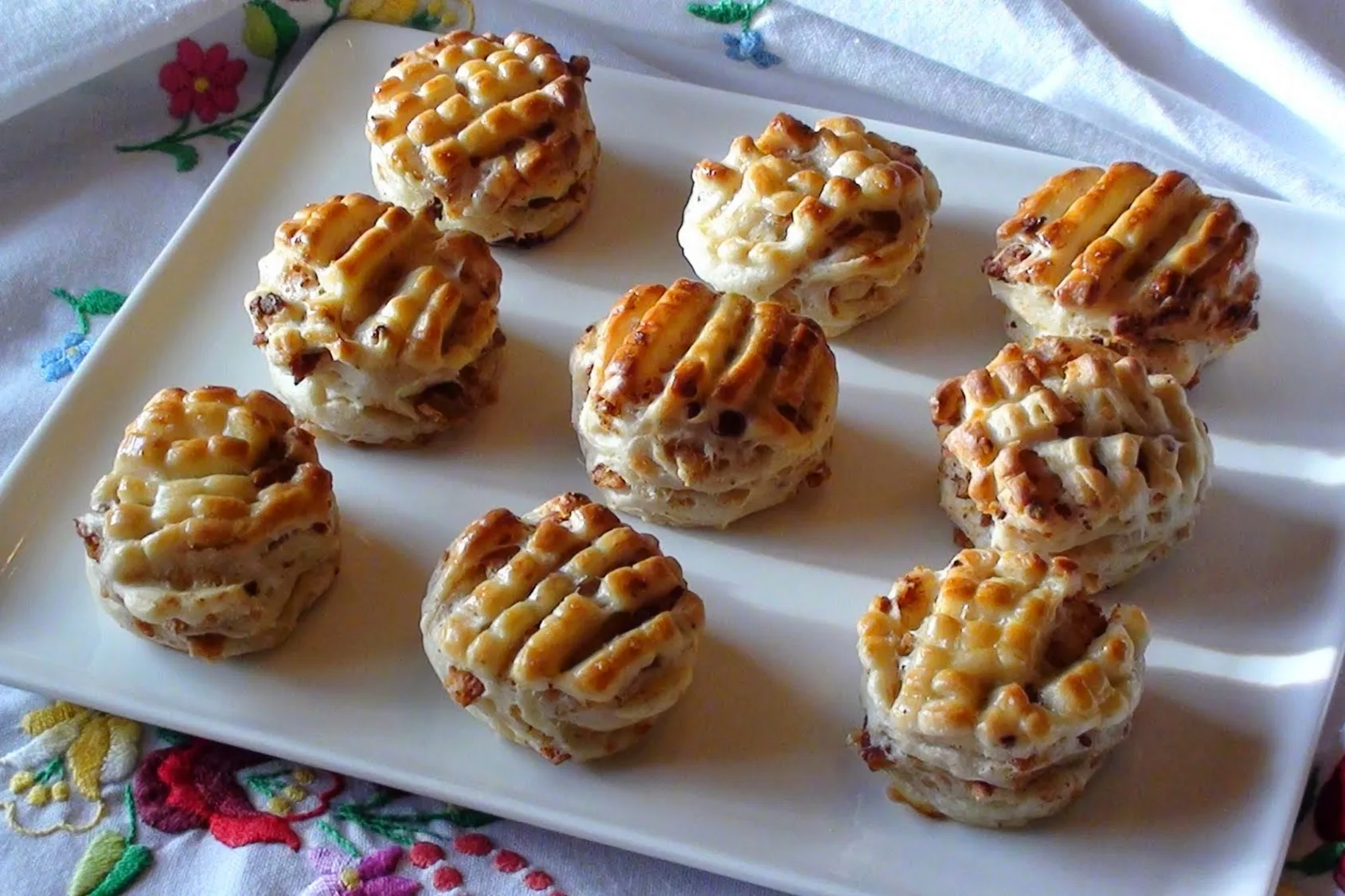
Pogácsa
Traditional Hungarian savory scones, often made with cheese or pork cracklings.
Ingredients
- •Flour
- •Butter
- •Yeast
- •Milk
- •Eggs
- •Cheese
- •Sour cream
- •Salt
Instructions
Make dough
Mix ingredients to form rich dough
Let rise
Allow dough to rise until doubled
Shape
Cut into small rounds
Score
Create pattern on top of scones
Bake
Bake until golden brown
Pogácsa, often described as Hungarian scones or biscuits, are beloved savory pastries that have been a staple of Hungarian cuisine for centuries. These small, round, and slightly flaky pastries are characterized by their distinctive pattern scored on top and can be found everywhere from casual family gatherings to formal events. While they may look simple, these buttery delights pack a flavorful punch that keeps people coming back for more.
The history of Pogácsa dates back to the Ottoman era in Hungary, with the word itself derived from the Turkish "poğaça." Over time, Hungarians have made this pastry their own, developing numerous variations that reflect regional preferences and family traditions. These cherished recipes have been passed down through generations, with each family often claiming their version as the definitive one.
Creating the perfect Pogácsa requires patience and attention to detail. The dough is enriched with butter, sour cream, and sometimes yeast, giving it a tender, flaky texture. After mixing and kneading, the dough needs time to rest and rise if yeast is used. The signature diamond or cross pattern scored on top isn't just decorative - it helps the pastries rise evenly and creates an appealing crispy surface. The most crucial step is achieving the right texture: the exterior should be golden and slightly crispy, while the interior remains soft and tender.
While the classic version is delicious on its own, Pogácsa comes in many varieties. The most popular include sajtos pogácsa (topped with cheese), tepertős pogácsa (made with pork cracklings), and burgonyás pogácsa (incorporating mashed potatoes into the dough). Some modern variations include additions like seeds, herbs, or even different types of cheese worked into the dough. The size can also vary from tiny one-bite morsels perfect for parties to larger versions suitable for a more substantial snack.
In Hungary, Pogácsa is a quintessential party food and is often served as a welcome snack with drinks. They're a common sight at wine tastings, where their savory flavor perfectly complements Hungarian wines. They're also popular as a portable snack, making them perfect for school lunches, picnics, or long journeys. Many Hungarians have fond memories of their grandmothers baking fresh batches of Pogácsa for family visits.
From a nutritional standpoint, Pogácsa is quite caloric due to its high butter content (approximately 150-200 calories per piece, depending on size and ingredients). The cheese varieties add protein but also increase the fat content. While they're not exactly health food, they can be part of a balanced diet when enjoyed in moderation. Those with gluten sensitivities should note that traditional Pogácsa is made with wheat flour, though some modern recipes experiment with gluten-free alternatives. The good news for vegetarians is that many varieties are meat-free, though it's always worth checking the ingredients as some traditional recipes include pork cracklings.
